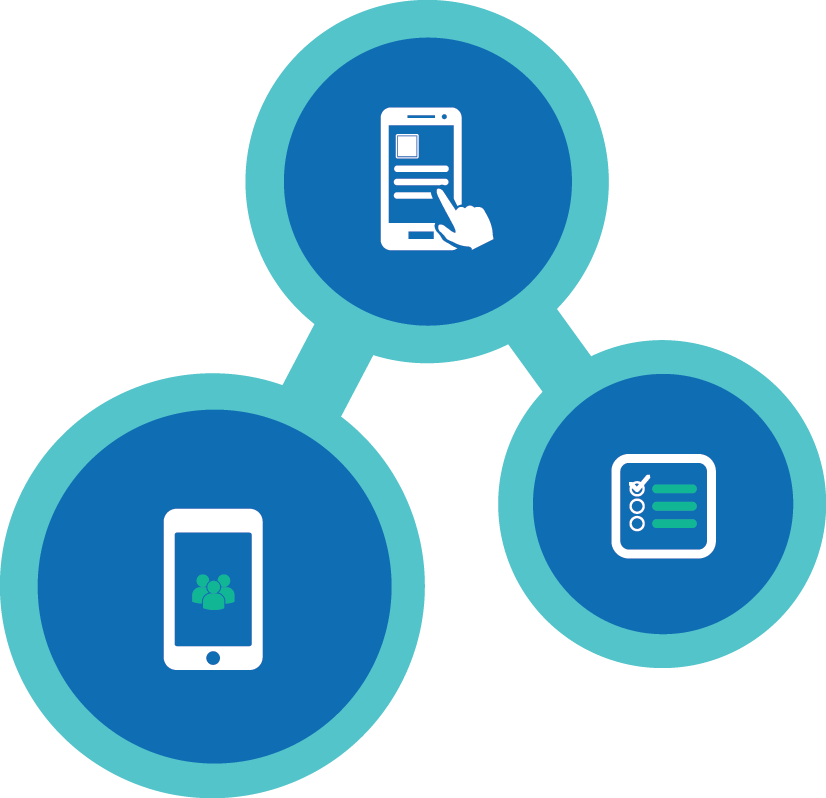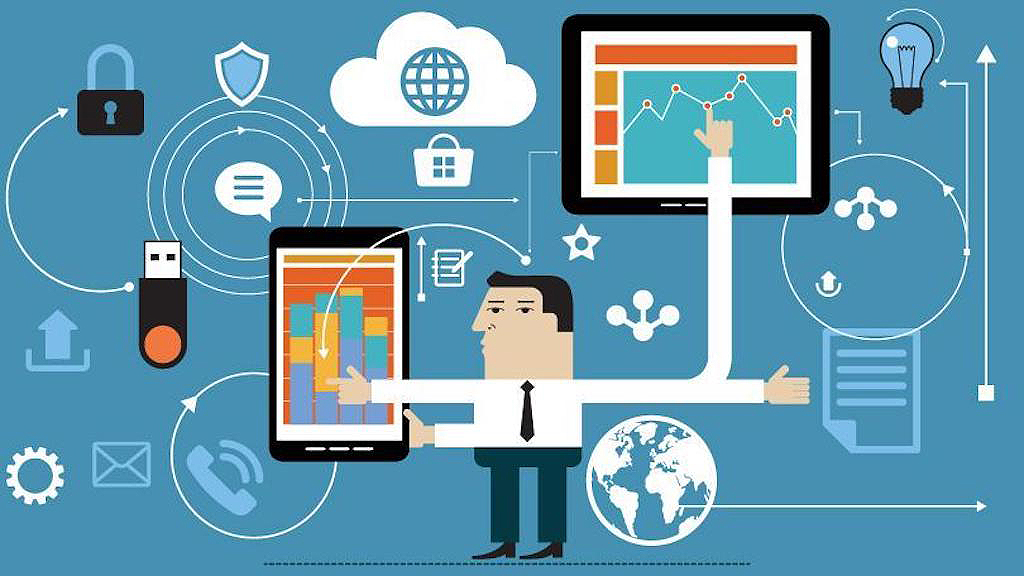What Is Mobile Device Management (MDM) & Why It’s Important
Mobile device management (MDM) is a proven methodology used to provide a workforce mobile productivity tools and applications while keeping corporate data secure.

Mobile device management is important for businesses and their workforces because they rely on mobile devices like smartphones, tablets and laptops for an assortment of jobs.
In recent years, working remotely has become essential and mobile devices have become an integral part of most organizations’ vital tools for productivity and efficiency.
Since enterprise mobile devices access critical business data, they can threaten security if hacked, stolen, or lost. So, the importance of managing mobile devices has evolved.
Managed IT providers and security leaders, such as ourselves here at BVA, provide, manage, and secure mobile devices in their respective corporate environmentsno matter their type or operating system.
How Mobile Device Management Works
The common question: Is mobile device management a piece of software? The short answer is yes and no.
Mobile Device Management (MDM) is a solution that uses software as a component to provision mobile devices while protecting an organization’s assets like data. Organizations practice MDM by applying software, processes and security policies onto mobile devices and their uses.
Beyond managing device inventory and provisioning, MDM solutions protect the device’s applications, data, and content. In this sense, MDM and mobile security are similar but they are different.
- Mobile device management (MDM) is a device-centric approach.
- Mobile security and unified endpoint management have evolved to a user-centric stance.
In an MDM program, employees can receive a dedicated work device, like laptops or smartphones, or have a personal device remotely enrolled. Personal devices receive role-based access to:
- Enterprise data and email
- Secure VPN
- GPS tracking
- Password-protected applications
- Other MDM software for optimal data security
MDM software can then monitor the behaviors and business-critical data on enrolled devices. More sophisticated MDM solutions can be analyzed by machine learning and AI to ensure devices are kept safe from malware and other cyberthreats.
For example, a firm might assign a laptop or smartphone to a staff member or consultant, pre-programmed with a data profile, VPN, and the other necessary software and applications. In this scenario, MDM offers the most control to the employer.
With MDM tools, enterprises can track, monitor, troubleshoot and even wipe device data in the event of theft, loss or a detected breach.
What are Mobile Device Management Policies?
MDM policies answer questions about how organizations will manage mobile devices and govern their use. To configure and publish their policies and processes.
It’s important to ask questions, such as:
- Do devices need passcode protection?
- Should cameras be disabled by default?
- Is Wi-Fi connectivity important?
- What customization options will the device provide?
- Do certain devices need to be geo-fenced?
Components of Mobile Device Management Tools
Device Tracking:
Each device enrolled with or issued by an enterprise can be configured to include GPS tracking and other programs. The programs allow an enterprise’s IT professionals to monitor, update and troubleshoot the device in real time. They can also detect and report high-risk or non-compliant devices and even remotely lock or wipe a device if lost or stolen.
Mobile Management:
IT departments procure, deploy, manage and support mobile devices for their workforce, like troubleshooting device functionality. We ensure each device comes with the needed operating systems and applications for their users, including applications for productivity, security and data protection, backup and restoration.
Application Security:
This can involve app wrapping, in which an IT administrator applies security or management features to an application. Then, it re-deploys the application as a containerized program. These security features can determine whether user authentication is required to open an app, whether data from the app can be copied, pasted or stored on the device, and whether the user can share a file.
Identity and Access Management (IAM):
Secure mobile management requires strong identity and access management (IAM). IAM allows an enterprise to manage user identities associated with a device. They can regulate each user’s access within an organization, using such features as single sign-on (SSO), multi-factor authentication and role-based access.
Endpoint Security:
Endpoint security encompasses all devices that access a corporate network, including wearables, Internet of Things (IoT) sensors and non-traditional mobile devices. Endpoint security can include standard network security tools such as antivirus software and network access control and incident response, URL filtering and cloud security.
BYOD and Mobile Device Management
Bring Your Own Device (BYOD):
This means employees use their personal mobile devices for work instead of company-issued devices. Applying enterprise security to a personal mobile device is more challenging than providing them.
BYOD is popular, especially among younger workers. Organizations make this compromise to increase employee satisfaction and productivity. BYOD can also make the mobile workforce more affordable because it eliminates the need to purchase extra hardware.
Enterprise Mobility Management (EMM):
This describes a broader form of mobile device management. Going beyond the device itself, its user and its data, EMM encompasses application and endpoint management and BYOD.
EMM solutions are highly scalable, and with new security features powered by AI analytics, these solutions can offer real-time insights and alerts about thousands of behaviors and activities coming in from multiple sources at once.
Unified Endpoint Management (UEM):
This represents the integration and evolution of MDM and EMM. It solves more challenges associated with IoT, desktop or other mobile device security.
UEM solutions can help enterprises secure and control the entire IT environment and its endpoints, like smartphones, tablets, laptops and desktops. It can also help secure their users’ personal data, apps, content and enterprise data.
With an agile UEM system, enterprises can choose scalable solutions based on needs, whether they’re covering a single operating system or various devices across different platforms such as Apple iOS iPhone, Android, Microsoft Windows, macOS, and Chrome OS.
Mature UEM solutions are powered by machine learning and AI, which can help an enterprise’s IT department make quick security decisions based on real-time data and analytics.
Mobile Device Management Best Practices
Whether a cloud based or on-premises model, an MDM solution should allow an organization to see endpoints, end-users and everything in between.
A good mobile device management software solution will:
- Save time
- Improve efficiency
- Increase production
- Increase security
- Ease of overall mobile management system
Here are three best practices to consider in selecting an MDM solution:
Automated Reports: Be sure the reporting and inventory tool consolidates all enrolled devices and associated information into easy-to-follow reports. Daily updates should be generated automatically without manual input.
Automatic Updates: Beyond the advantages of instant accessibility afforded by cloud MDM, there should be no hardware to buy, install or maintain, and no associated fees. The platform should be automatically updated with new features at a company’s disposal.
Easy Search: The ability to search for anything and everything is key to a cloud-based solution. An organization should be able to access its devices, integrations, reports, apps and secure documents easily.








